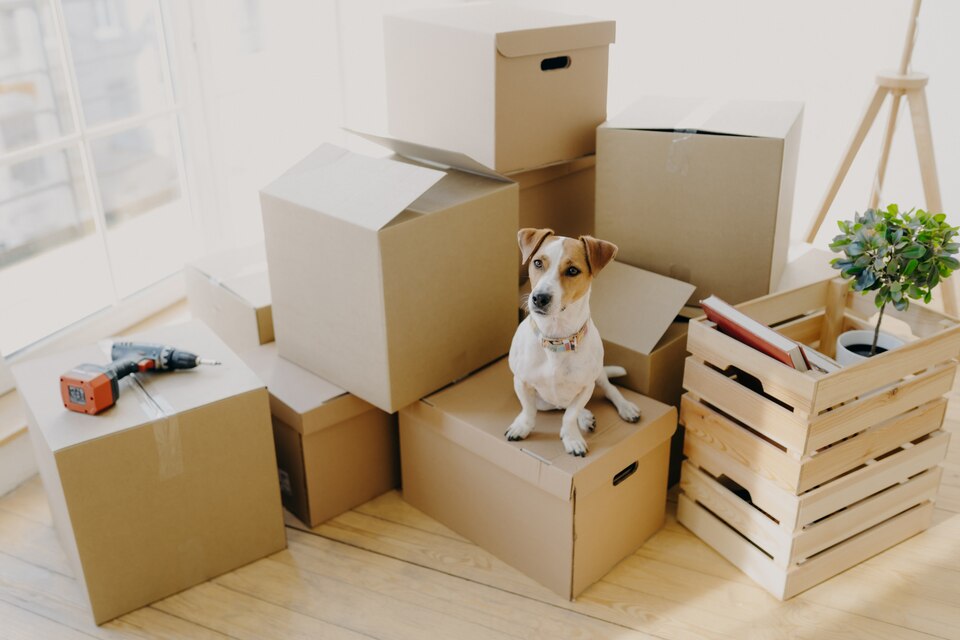In the chaos of shifting residences, ensuring a smooth transition for our furry companions often becomes a challenging endeavor. Pet relocation demands meticulous planning and execution to mitigate stress for both the pet and the owner. From acclimating to a new environment to adhering to regulations, here’s your comprehensive guide to navigating the intricate process of pet relocation seamlessly.
Understanding Pet Relocation:
Relocating with pets involves a myriad of considerations, encompassing legal requirements, transportation logistics, and the emotional well-being of the animals. Whether it’s a domestic move or an international transition, the process demands attention to detail.
Preparing for the Move:
Consulting a Veterinarian: Commence preparations by scheduling a visit to your veterinarian. Obtain a health certificate and ensure all vaccinations are up-to-date as per the destination’s regulations.
Research and Planning: Familiarize yourself with the local regulations and requirements of your new location. Understand quarantine regulations, necessary paperwork, and any specific health certifications.
Choosing the Right Carrier: Invest in a comfortable and secure carrier for your pet. Acquaint them with the carrier gradually to minimize stress during travel.
Executing the Relocation:
Safe Transportation: Opt for pet-friendly airlines or reputable pet relocation services. Ensure the carriers adhere to safety standards and provide a conducive environment for the pet’s comfort.
Traveling Essentials: Pack essentials such as food, water, medication, and familiar toys or blankets to provide a sense of familiarity during the journey.
Acclimation Post-Arrival: Upon arrival, create a designated space in your new home for the pet. Gradually introduce them to the new environment to ease the transition.
Overcoming Challenges:
Emotional Support: Pets might display signs of stress or anxiety during relocation. Offer reassurance, maintain routines, and allocate quality time to alleviate their discomfort.
Adapting to New Surroundings: Encourage exploration within the new surroundings, gradually introducing them to other pets or neighbors to facilitate socialization.
Patience and Consistency: Adjusting to a new environment takes time. Be patient and consistent in providing support and routines for your pet.
Planning Ahead for Success:
Routine Maintenance: Maintain your pet’s routine as much as possible before and after the move. Consistency in feeding times, walks, and play sessions helps in easing their transition.
Documentation and Paperwork: Ensure all necessary documents, including medical records, identification tags, and permits, are organized and readily accessible during travel and at the destination.
Choosing Pet-Friendly Accommodation: If relocating to a new home, prioritize pet-friendly housing options. Consider factors like nearby parks, walking trails, and pet amenities to ensure a comfortable living environment.
Embracing New Adventures:
Exploration and Bonding: Take the time to explore the new neighborhood with your pet. Regular walks and outdoor activities help in familiarizing them with the surroundings and building a stronger bond.
Socialization Opportunities: Introduce your pet to other animals and friendly neighbors gradually. Positive interactions foster socialization and help in adapting to the new community.
Positive Reinforcement: Use positive reinforcement techniques to encourage good behavior in the new setting. Rewarding positive actions aids in building confidence and comfort.
Planning Ahead for Success
Routine Maintenance: Maintain your pet’s routine as much as possible before and after the move. Consistency in feeding times, walks, and play sessions helps in easing their transition.
Documentation and Paperwork: Ensure all necessary documents, including medical records, identification tags, and permits, are organized and readily accessible during travel and at the destination.
Choosing Pet-Friendly Accommodation: If relocating to a new home, prioritize pet-friendly housing options. Consider factors like nearby parks, walking trails, and pet amenities to ensure a comfortable living environment.
Embracing New Adventures
Exploration and Bonding: Take the time to explore the new neighborhood with your pet. Regular walks and outdoor activities help in familiarizing them with the surroundings and building a stronger bond.
Socialization Opportunities: Introduce your pet to other animals and friendly neighbors gradually. Positive interactions foster socialization and help in adapting to the new community.
Positive Reinforcement: Use positive reinforcement techniques to encourage good behavior in the new setting. Rewarding positive actions aids in building confidence and comfort.
Monitoring and Adjusting:
Observation and Patience: Monitor your pet’s behavior closely in the initial days after relocation. Display patience and understanding as they adjust to the new environment.
Adapting to Changes: Be prepared for behavioral changes. Some pets might exhibit stress-related behaviors initially, which may fade with time and reassurance.
Seeking Professional Help: In case of persistent stress or behavioral issues, consider seeking guidance from a professional veterinarian or animal behaviorist for tailored advice and support.
A Harmonious Transition:
Pet relocation is an intricate process that demands meticulous planning, patience, and empathy. By prioritizing your pet’s needs and maintaining a supportive environment, you pave the way for a seamless transition.
Remember, every pet responds uniquely to relocation. Tailoring your approach to suit their individual needs and providing consistent love and care will ensure a smoother and more comfortable adjustment.









